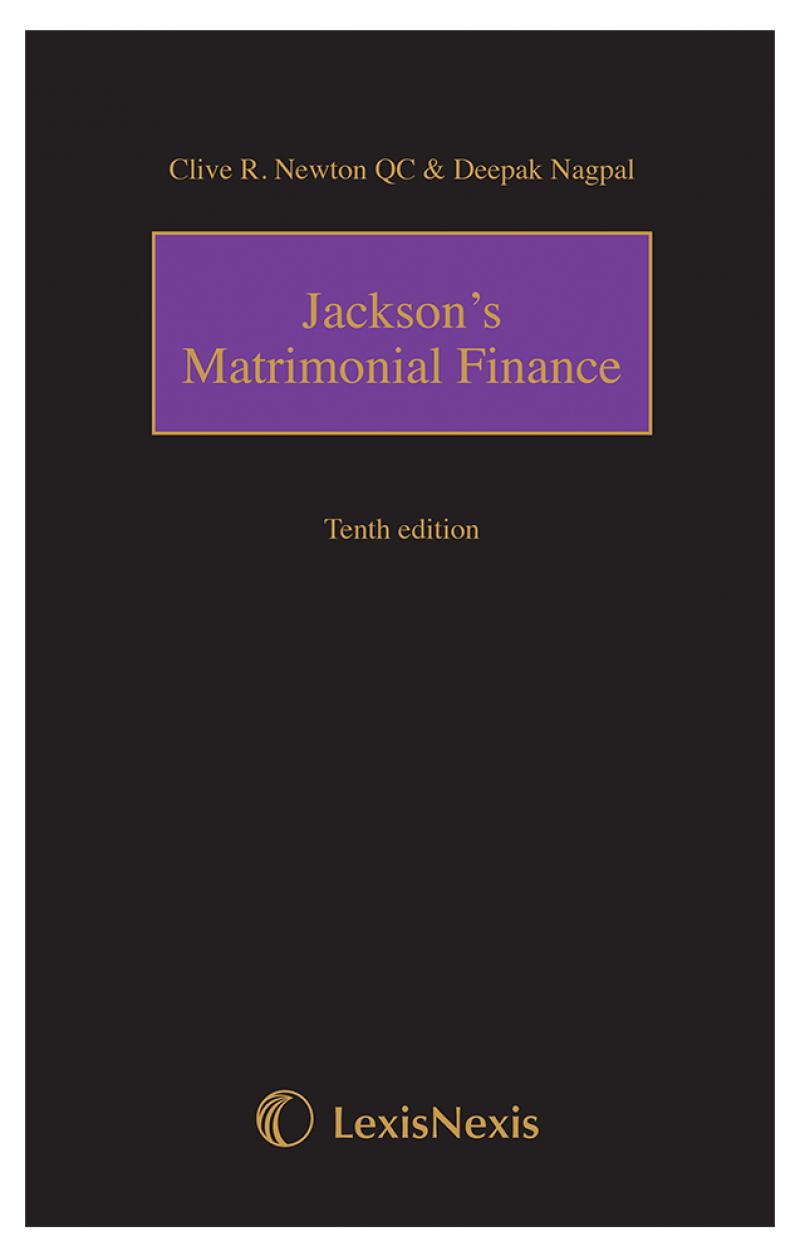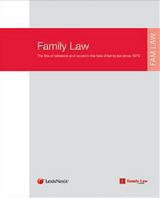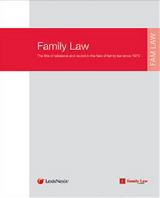- News & Comment
-
Online Shop
Online Services
Looseleafs
Law Reports
Books and eBooks
-
CPD & Events
Webinars
Events
- Authors
- About Family Law
- Contact












 4 FEB 2025
4 FEB 2025

 3 FEB 2025
3 FEB 2025

 3 FEB 2025
3 FEB 2025

 3 FEB 2025
3 FEB 2025

 3 FEB 2025
3 FEB 2025






In its interim report of 31 July 2014, the Financial Remedies Working Group (FRWG) recommended the formal adoption of standard orders for financial remedy cases. The FRWG reiterated this recommendation in its final report of 15 December 2014.
This was complex work which could not be rushed and, no fault of Mostyn J and those working with him, there was a necessary slowing of the tempo. I remain convinced, however, that the arguments in favour of standardisation are clear and compelling.
We are no longer living in the world of the fountain pen and biro (which even today still account for far too much drafting of orders) any more than in the world of the quill pen. My ambition, therefore, is that the standardised orders should be available to everyone electronically. The use of standard orders produced at the press of a button will obviate the need for drafts from counsel and solicitors scribbled out in the corridor. It should assist greatly in reducing the time judges and court staff spend approving and completing orders. And the existence of a body of standardised and judicially approved forms of order will go a long way to assisting judges and others – mediators for example – faced with the increasing number of litigants in person who cannot be expected to draft their own orders.
In the long run, this project is critically dependent upon the availability of modern, up-to-date, IT in the courts. At present, the full use of standardised orders is still impeded by the inadequate state of the IT available to judges and courts. FamilyMan, the system with which HMCTS continues to have to struggle, has long been obsolescent and is now obsolete. Although it may, I fear, still be some time before an adequate replacement for FamilyMan is available, the steady implementation of the ongoing court modernisation programme gives real cause for optimism that we will fairly soon be seeing real changes in our IT as the digital court of the future becomes a reality.
The digital revolution will enable us to carry through to completion this radical revision of court orders and how they are produced. Court orders will be standardised and digitised, with standard templates, self-populating boxes and drop-down menus designed to ease and shorten the process of drafting and then producing the order. Given the marvels of modern IT, why should we not be able to hand every litigant in all but the most complex cases a sealed order before they leave the courtroom?
We are not there yet, but I have decided that the time has now come for these draft orders to be placed on a more formal footing. I do so in order to promote national consistency, and to avoid for the future, so far as possible, ambiguities in the meaning of the wording of an order. This Guidance relates to the first set of such orders: financial and enforcement orders. Further Guidance will be issued early next year in relation to the second tranche of standard orders.
In Besharova v Berezovsky [2016] EWCA Civ 161, the Court of Appeal criticised a consent order in a substantial financial case as “not particularly well drafted”, and much time and expense was wasted in construing its meaning and effect. Use of the standard orders should go a long way to avoiding such controversies arising in the future.
I therefore promulgate with this Guidance the standard financial and enforcement orders for general use. The orders to which this Guidance relates are those in the linked zip file. With my approval, these orders have been prepared in accordance with the ‘House Rules’ referred to in my sixth ‘View from the President’s chambers’: [2013] Fam Law 1260, 1263.
These orders do not have the strict status of forms within Part 5 of the FPR 2010 and their use, although strongly to be encouraged, is not mandatory. Moreover, a standard order may be varied by the court or a party if the variation is required by the circumstances of a particular case. There will be many circumstances when a variation is required and departure from the standard form will not, of course, prevent an order being valid and binding. The standard orders should however represent the starting point, and, I would hope and expect, usually the finishing point, of the drafting exercise.
The orders are colour coded. The text in red colouring is used where a selection has to be made by the person drafting the order. The text in SMALL CAPITALS with green colouring is where the draft orders incorporate an editorial comment.
James Munby, President of the Family Division
NB The contents of the attached zip file were amended on 23 January 2018 to reflect the changes highlighted by 'Practice Guidance: Standard Financial and Enforcement Orders (Addendum)'




Leave a commentOrder by
Newest on top Oldest on top